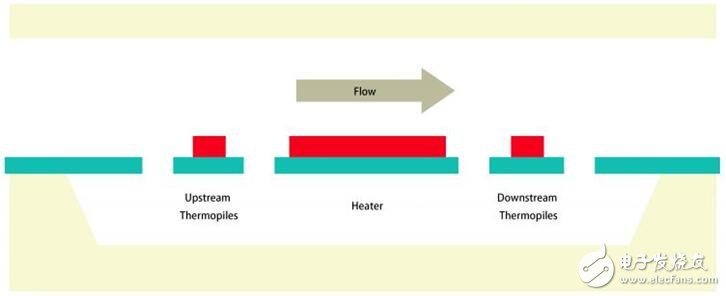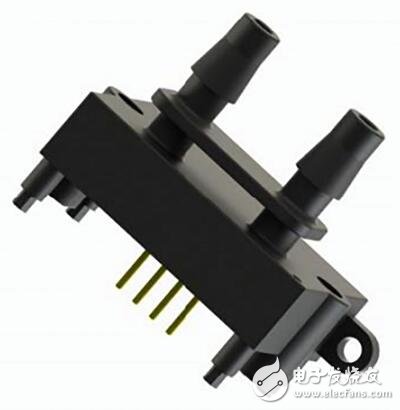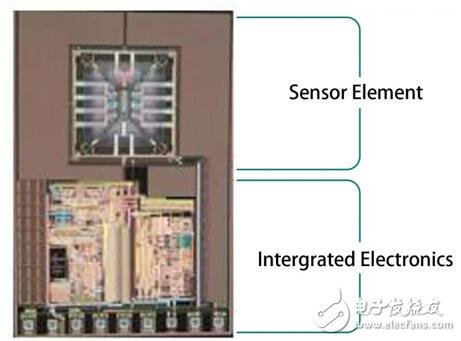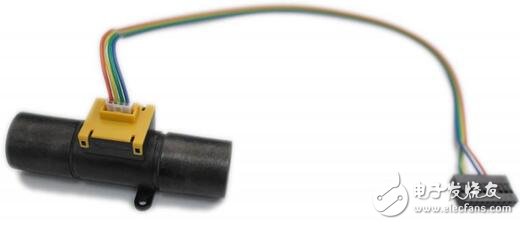Help you quickly understand the latest differential pressure measurement
According to a consulting from Memes, today's pressure sensors are almost as common as "op-amps" in the 1990s. From the consumer's smart phone to the most sophisticated factory in the world, precision instruments are used to control pressure sensors. The pressure sensor itself is not new, but the difference between the technology and the device itself is great. This article is designed to help design engineers quickly understand the latest differential pressure (DP) measurements. The differential pressure (DP) sensor is a special type of pressure sensor that measures the pressure change between two ports on the device. This sensor is different from a static or absolute pressure sensor that only measures the pressure at a single port. Barometers and altimeters are classic examples of absolute pressure sensors, and aircraft airspeed sensors are classic examples of DP measurement devices. DP is also a measure of flow; therefore, many applications describe their requirements as flow measurements. Low-voltage range DP measurements are commonly used in applications such as medical, industrial, and Internet of Things (IoT). The unit of DP measurement is Pascal (Pa) or inch of water (inH20), ie 1.0 Pa = 0.00402 inH20. High-precision DP measurement is a more accurate measurement than 0.1 Pa. Typical terminal applications for traffic and DP include: 1. Medical Devices: For example, in homes, small machines called continuous positive pressure ventilation (CPAP) use flow sensors to help users regulate air flow. This method helps treat sleep apnea. 2. Housing metering: Flow sensors are commonly used in the measurement and calculation of natural gas in houses and buildings around the world. 3, electrical appliances: DP exist in residential, commercial and industrial gas and other types of burners, used to control the gas flow to the combustion system. They also exist in HVAC systems for manipulating heating and cooling in specific areas. Industrial components: Valves, pumps, and other basic components in the industry generally require accurate and reliable flow and DP measurements. 5. The Internet of Things (IoT): IoT has created a new smart consumer device that requires high precision for air quality and airflow measurement. These devices combine particle counters with airflow measurements to measure the amount of tiny pm2.5 particles in the air. There is evidence that large amounts of PM2.5 particles can cause serious health problems in children. Recently, new technologies use "thermal MEMS" sensing to achieve ultra-low cost for accurate DP measurements. MEMS (Micro-electrical Mechanical Systems) are widely used processes that create structures in silicon. The figure below shows the thermal working principle (Figure 1). A better understanding of thermal MEMS pressure sensing can be obtained through the following diagrams. Figure 1: Schematic diagram of a MEMS flow sensor MEMS flow sensors can be manufactured using single or multiple heaters and temperature sensors. A simple manufacturing method is that two temperature sensors surround a heater and are placed symmetrically on the left and right sides. When the heater (ie, the resistor) is heated by the current, a steady-state temperature profile is formed around the heater. When the gas (medium) does not flow, two symmetrical temperature sensors will detect the same temperature. When the gas flows (from left to right), hot air blows from left to right. At this time, the temperature reading of the sensor is higher on the right than on the left. Since the temperature difference is proportional to the flow rate (linearity at low flow rates with linear & high flow rates), we can determine the flow rate by measuring the temperature difference between the two temperature sensors. In the thermal MEMS flow measurement example, a standard material using a CMOS process is used to build a MEMS flow sensor by integrating an ACININA MDP200 sensor, a MEMS sensor, and a signal mediation circuit on a single chip. In CMOS processes, polysilicon and aluminum are common materials and are commonly used for interconnections. In thermal MEMS sensors, polysilicon can act as a heat-generating element resistance, while polysilicon and aluminum are in contact with each other, forming a thermocouple-based temperature sensor. With this approach, MEMS flow sensors can be built without any special materials and processes. The signal conditioning circuit can naturally integrate with the sensor onto a single chip. This monolithic integrated circuit can achieve smaller size, lower cost, higher precision and control the sensor. With an integrated CMOS circuit, it is possible to monitor the temperature difference down to micro-Kelvin to allow high resolution and low flow rate sensing. The micro-differential flow sensor MDP200 and its internal sensors introduced by Midea Semiconductor are shown in Figure 2 and Figure 3. Figure 2: Packaged flow sensor Figure 3: Sensor Sensing Elements and ASICs The low cost semiconductor flow sensor can simply be connected to any standard microcontroller with an I2C interface. Software integration can be completed in a few hours. Low power consumption below 10 mA at 3.3 V operating voltage is also generally accepted. In battery-operated applications, charging and measuring time add up to less than 0.1 seconds, the device can be recycled. When selecting and specifying thermal MEMS flow sensors, there are also the following precautions: 1, the type of gas; 2, accuracy; 3, connection mechanism and height correction. The gas type must be taken into account when selecting the gas sensor. Typical gas sensor compatibility includes air, nitrogen (N2), and oxygen (O2). ACEINNA's sensors are also compatible with carbon dioxide (CO2), helium (He) and CH4 (methane). The ratio of flow sensor return to flow; therefore, the classic terms describing accuracy are zero (offset) and span (linear) errors. There are currently two methods to determine if the accuracy of a flow or differential measurement device meets the requirements. One of the methods, and the simplest method, is to consider the manufacturer's total accuracy specification. This specification combines initial offsets and span errors, as well as changes that are subject to temperature and other subtle effects. If this error is too large for the intended application, then it is necessary to consider each error separately. In many applications, once the device is installed, initial biases can be eliminated to reduce the total error estimate. In other applications, the required range may be smaller than the device specification, so the span error contribution may also be less than the total error specification included. Finally, how to connect a flow sensor to a fluid is also often an interesting challenge. Instead of directly inserting the device into the current, a bypass flow circuit can be used. Figure 4 shows how to properly set the voltage drop circuit, which will force a part of the current through the device. This type of flow drop circuit is generally customized or provided by the flow sensor manufacturer. Figure 4: Bypass throttling circuit can measure in-tube flow Another improvement problem is that DP sensors can require a high degree of correction for precision applications. The height correction is usually done by adding a barometer to the terminal equipment. Manufacturers usually provide a proper height correction formula. In lower-precision applications, this compensation is not needed.
Intelligent charging logo and fast charging: This 100 port USB charger automatically identifies the current signal and performs the current output according to the device restriction. The device is limited to intelligent and secure. Just plug in, no driver or software is required. The latest generation of USB hub controller, the maximum charging output of each USB port 3.5A. Single -port supports fast charging to save your time and energy. 100 % security charging: This 100 port USB charging station built -in smart chip is to prevent voltage from exceeding the current and overload. Reasonable cooling holes can effectively dissipate heat to prevent excessive excessiveness. Excessive charging protection, when these devices are fully charged, they will automatically convert to small charges flowing current, and the battery saturation rate is 99 %.
100 Port Usb Charger,100 Port Usb Wall Charger,Multi Port Usb Hub Charger,100 Port Usb Charging Station shenzhen ns-idae technology co.,ltd , https://www.best-charger.com



